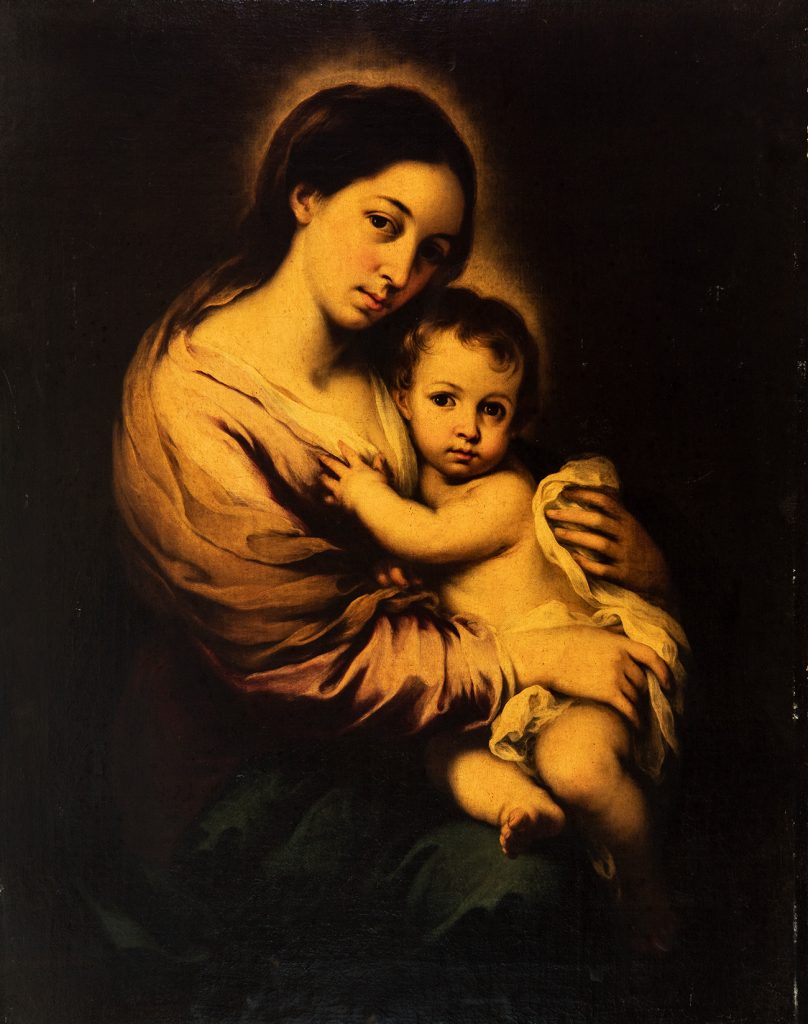Virgin with Child, Murillo Workshop.
The iconography of the Virgin with the Child as an independent genre underwent an unprecedented renewal by the hand of the Sevillian painter Bartolomé Esteban Murillo. Although the Marian theme knew a deep devotion in Spain in the seventeenth century, it was rarely treated in painting as an independent painting. Murillo revolutionized the approach to the subject of Maternity both by the plastic treatment and by the model of women that he introduced.
The British critic John Ruskin was captivated by the sublime simplicity of those fragile-looking young virgins, so far removed from the Renaissance madonnas, those monumental and invulnerable goddesses. Those of Murillo, writes the English historian, “are mortal, but” never vulgar “: it is through their mortal essence that the light of holy beauty is reflected, beauty of a sweet soul and unfathomable love”.
The Virgin Murilles model is not easy to emulate. Those who dared to do so often failed. For this reason, the painting of the Virgin with the Child that Setdart puts up for auction these days (lot 35251392), given its undeniable quality and the intimate stylistic affinity with the maternity wards of the Andalusian master, is more than likely not only contemporary with Murillo but even come from your workshop.
The Virgin and Child Jesus tenderly embrace each other, both bodies emerging from a dark background. The female model is the usual in Murillo, that of a young woman in the prime of life. Head bent over the little boy, his black eyes look at us, but remain absent. It is a look of foreshadowing and veiled sorrow that characterizes murilles maternity wards. The masterly modeling of the bodies with a warm light that makes them emerge from the blackness of the background is also typical of Murillo. Only the subtle halo that surrounds the silky locks tells us of their divine origin. The Child, fleshy naked except for the cloth that slides naturally between his shapely legs, looks like his mother in front.
Typical of Murillo’s first stage, which took place between 1645 and 1650, are these closed backgrounds, the predominance of earthy tones and large and compact figures, like those in this painting.
The composition is balanced and the whole oozes a silent sweetness, completely devoid of sentimentality. In all these characteristics, this canvas is very close to the spirit of Murillo, which we can exemplify with pieces by the painter preserved in the Prado Museum (see the “Virgen del Rosario”), or the “Virgen con Niño” from the Pitti Palace. In both, the figures are also wrapped in smooth drapes, combining the blue of the tunic and the golden veil with the child’s white cloth. In both, a natural relationship between mother and child is established, taking the genre of devotional painting beyond the traditional orthodox limits.



